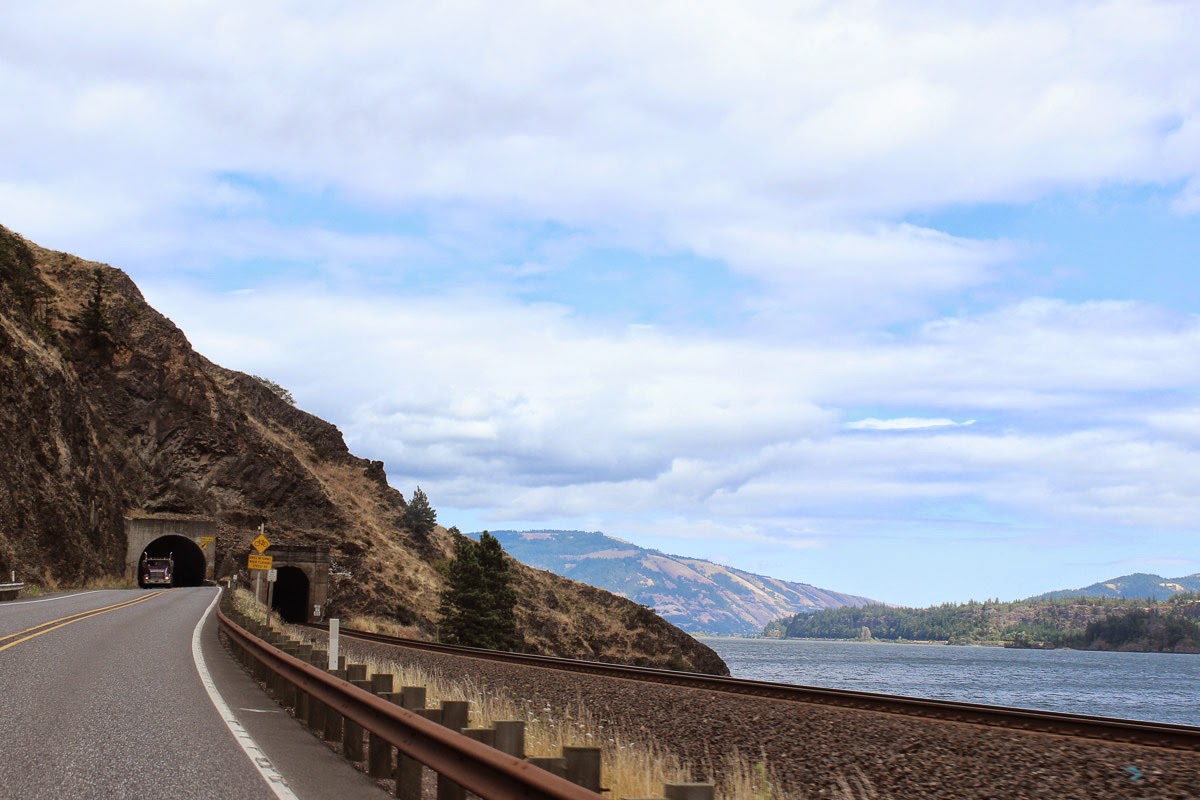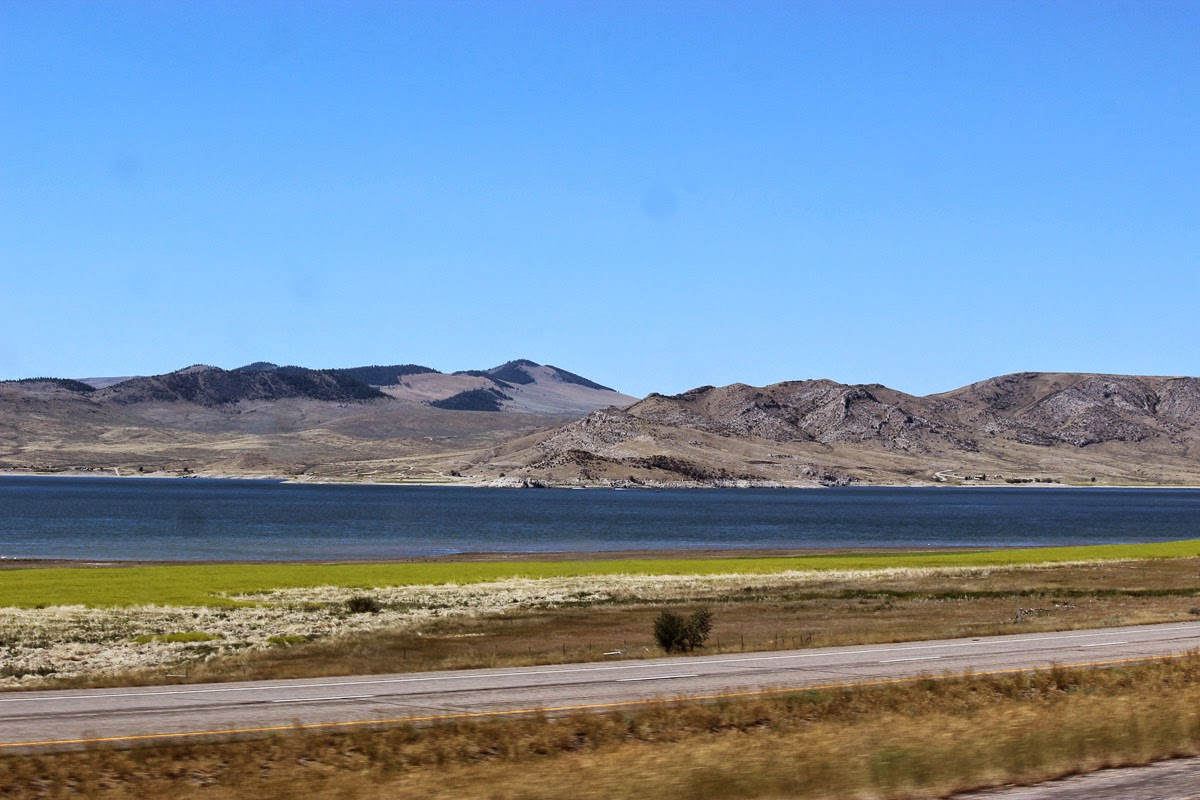The time had come for us to leave Mt. Rainier and set out for Mt. St. Helens. While finishing packing the Jeep, we were graced with a brief visit from this Clark’s Nutcracker.
We had read about this guy at the visitor center and were delighted to get to see him. He plays an important role in the forest, harvesting whitebark pine cone seeds, tucking as many as 150 of them into a pouch under his tongue, and carrying them off to another location to bury in the ground for later consumption. One of these birds can bury as many as 98,000 seeds in one season! They also are able to remember the locations of their seed caches up to nine months later, even if buried under three feet of snow, and it’s worth the effort since these seeds are extremely calorie-dense. Of course not all the seed caches get eaten, so what remains can potentially grow into a new tree, helping preserve this crucial source of food and shelter for not just the Clark’s Nutcracker, but for over one hundred other species which depend on it. Here’s a great article with more info: Importance of Whitebark Pines and Clark’s Nutcrackers in Western Ecosystems
On our way out of the campground I got a parting shot of the White River, and Mt. Rainier mingling with the clouds in the background.
We wound our way through this rainforest zone, where the dense forest provides shelter for thick blankets of ferns and hosts an abundance of mosses growing on any surface available.
Our experience at Mt. St. Helens National Volcanic Monument was rather anticlimactic; the fog was so thick we could only see about a hundred yards in front of us. Here’s what we saw looking in the direction of the mountain:
Continuing on, we checked out a couple of campgrounds in the surrounding Gifford Pinchot National Forest, hoping against odds to find a site with a fair amount of sunshine in order to dry things out a bit.
We even drove down a few forest service roads to look for a primitive site, but found nothing suitable. So we kept driving south, eventually meeting up with the Columbia River.
We crossed the river into Oregon and got on the highway, which follows the river for a while before separating from it. The change in climate and landscape was quite dramatic, coming out of a temperate rainforest and almost immediately into an arid environment.
We ended up in Emigrant State Park Campground for the night, which was not a typical choice for us, but it was a nice, clean and well maintained park. Seeming to be a popular spot, they had toilets that flushed, hand soap (I’m used to bringing my own), hot water coming out of the faucets, and even free showers. Even with the number of people there, it was quiet and peaceful all night. In spite of fairly heavy dew in the morning, our gear dried out quickly. After packing up and making some nice hot coffee with our favorite little coffee maker, we were on our way again.
We had a fairly short day of driving and stayed in a hotel just outside of Boise, Idaho, taking the opportunity to do laundry, shower and get supplies.
Around noontime the next day we passed through the Craters of the Moon National Monument & Preserve.
This is a large, fascinating area of past volcanic activity which contains three lava fields along the Great Rift of Idaho. The lava fields were created by more of a flood-like activity rather than the explosiveness we usually associate with volcanic events. After a brief stop at the visitor center, we continued on, eventually crossing into Montana.
We began searching for a campground, but they were few and far between.
Finally, we located Beaver Dam Campground which was accessible by a gravel road.
On each side of this road was private property, with a few homes and some livestock until we reached the campground.
We noticed that everyone there was in hard-sided RVs, and there were plenty of bear lockers for food storage. We also noticed fresh bear scat in both campsites we were considering, right at the entrances to the sites, as if welcoming us for dinner – theirs. In contrast to our several overnights in remote Alaskan bear country, this just didn’t feel right to us. At first, one might think having more people nearby to help if a situation arises would be helpful. Usually my next thought is that having more people nearby increases the potential for attracting bears in the first place. We keep an absolutely spotless campsite and cook non-greasy, less odorous foods when in bear country, but we are well aware that perhaps not everyone follows such a strict routine. Aside from that, the nearby homes and livestock might also serve as bear beacons, so we decided not to stay there.
We kept driving and driving, and driving some more, stopping in a couple of towns along the way.
We were looking for a hotel now, as it was getting late. The hotels we found were either full or charging close to $300 a night! I asked one hotel clerk if there was something going on nearby, and she said, “No, it’s just summertime in Bozeman.” We briefly considered sleeping in a Walmart parking lot, and if our seats were able to fully recline, we might have done it! This was one of those occasions when we were quite envious of the RV crowd. Finally we found a place to stay in Livingston that was much more reasonable, though still not cheap. This put us within an hour or so of Yellowstone, which we had decided to visit again since our first stay was cut short, and at this point we were pretty far ahead of our original schedule.
There are two photo albums to go with this post!
Leaving Mt. Rainier; Mt. St. Helens; Oregon
Oregon; Idaho and Craters of the Moon; Montana





















































































No comments:
Post a Comment